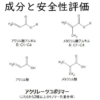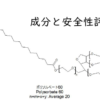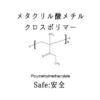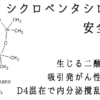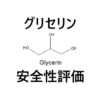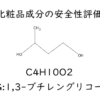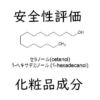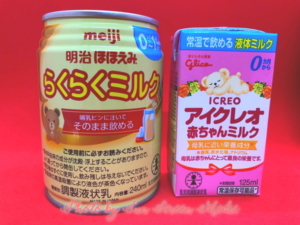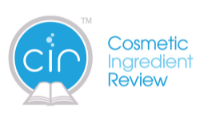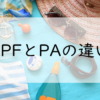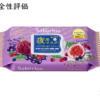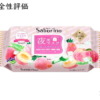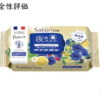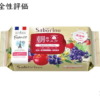キサンタンガムは基本的に安全|日焼け止めの成分チェック
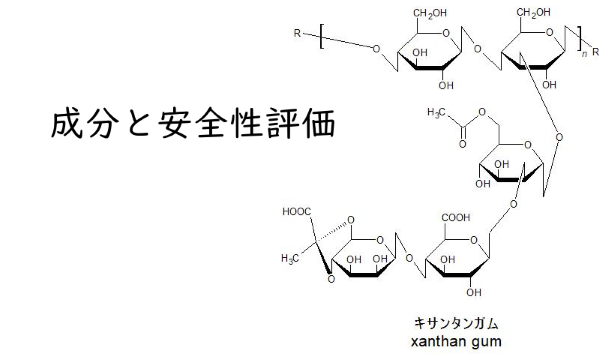
キサンタンガム(Xanthan gum)は、化学式C35H49O29 (モノマー)、分子量は販売されているグレードにより異なり、約200万、または、1300万~5000万ほどになります。水によく溶けて粘性を示す無味無臭の物質で、増粘剤として利用されます。
成分概要と特徴
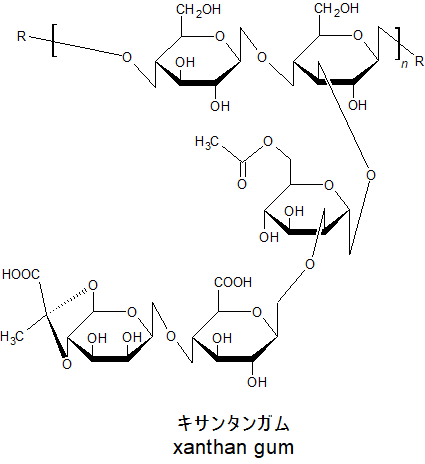
キサンタンガム(Xanthan gum)は、化学式C35H49O29 (モノマー)、分子量[1063]nで、販売されているグレードにより異なり、約200万、または、1300万~5000万ほどになります。水によく溶けて粘性を示す無味無臭の物質です。
化粧品としては増粘剤としての利用が多く、キサンタンガムそのものは経口摂取を試しても何ら害はありませんが推奨致しません。カルシウム塩、カリウム塩の形で混在することもあり用途が幅広い、安全性の高い物質です。
キサンタンガムの危険性
キサンタンガムは嚥下能力を向上させるために添加されることもあり、経口摂取に関してはそれほど問題ありません。
Resource ThickenUp Clear improves the safety of swallow without increasing residue providing a viscosity-dependent therapeutic effect for patients with oropharyngeal dysphagia. At nectar viscosity, the effect is due to intrinsic texture properties, spoon-thick viscosity adding changes in swallow physiology.
引用元:https://onlinelibrary.wiley.com/doi/full/10.1111/apt.12696
残留物を増やすことなく嚥下の安全性を向上させ、口腔咽頭嚥下障害の患者(試験人数120人)に有効性がある事が分かっています。実験においては、キサンタンガム(n=14)が用いられており、この場合、分子量は約14,882の比較的小さい高分子で実験されています。
キサンタンガムの長期摂取・遺伝毒性・生殖毒性
Groups of 4 male and 4 female beagle dogs each were fed 0, 0.25, 0.37 and 1.0 g/kg/day of xanthan gum in the diet for 2 years starting at 4–8 months of age. No differences from control dogs were seen in the treated dogs with respect to survival, food intake, body weight gain, electrocardiograms, blood pressures, hemograms, gross necropsy observations, organ weights or histopathologic observations. Blood urea nitrogen was elevated at several test intervals for one high-level male.
引用元:https://www.sciencedirect.com/science/article/abs/pii/0041008X73901786
ビーグル犬のオス4匹とメス4匹のグループに、生後4〜8か月から2年間、0、0.25、0.37、1.0 g / kg /日のキサンタンガムを与えました。 生存率、摂餌量、体重増加、心電図、血圧、ヘモグラム、肉眼的剖検観察、臓器重量または組織病理学的観察に関して、対照犬との違いは治療犬に見られなかった。 1匹のオスに関して、血中尿素窒素がいくつかの試験間隔で上昇したとのことです。
2年間、3世代に渡ってキサンタンガムが与えられても、問題がなかったということで、キサンタンガムは少量(市販の含有量程度)であれば経口摂取に問題はないでしょう。
キサンタンガムの眼刺激性
Thirty-two patients were enrolled in this study; 28 completed. The diurnal intraocular pressure as well as the 08:00 trough and +2 hour post dosing pressures were statistically equal between groups, although a trend to a lower mean pressure was observed in the TXE (17.9 ± 3.2mmHg) compared to the TXG (18.6 ± 3.4mmHg) group. However, eight hours after dosing the pressure was 17.5 ± 3.2mmHg in the TXE group and 18.9 ± 3.3mmHg in the TXG group (P = 0.0019). Safety was similar between groups, including corneal and conjunctival staining, conjunctival hyperemia graded by anterior segment photography and at the slit lamp, and unsolicited and solicited side effects.
引用元:https://www.tandfonline.com/doi/abs/10.1076/ceyr.24.5.387.8516
32人の患者がこの研究に登録されました。 28人が完了しました。 TXE(17.9±3.2mmHg)とTXG(18.6±18.6± 3.4mmHg)グループで比較。投与後8時間の圧力は、TXEグループで17.5±3.2mmHg、TXGグループで18.9±3.3mmHgでした(P = 0.0019)。 安全性については、角膜・結膜の充血、前眼部写真および細隙灯での結膜充血、および、未確認の副作用を含め、双方のグループ間で類似していた、とあります。
これはキサンタンガムに含まれている成分に関しての研究ですが、目に入ったとしても適切な処置を行えば8時間程度で症状は回復するとのことです。起こったとしても充血なので、キサンタンガムを含む化粧品類は目に入れないように(通常目に入れるものではない)しましょう。
ただし、キサンタンガムとコンドロイチン硫酸を一定濃度で混ぜたものがドライアイ対策に有効かもしれないとする研究もあります。
A total of 28 patients with mild to moderate dry eye were included in the per protocol analysis. TBUT was similar between groups at baseline (chondroitin sulfate and xanthan gum [CS/XG] group, 5.2 ± 2.3; Systane® group, 4.7 ± 2.6; P = 0.488), after 2 months of treatment, TBUT was still similar in both groups (CS/XG group, 6.1 ± 2.5; Systane® group, 7.3 ± 2.5; P = 0.088). Baseline OSDI was similar between the groups (CS/XG group, 18.8 ± 5.3; Systane® group, 19.8 ± 7.1; P = 0.810), but after 2 months of treatment, the OSDI was significantly lower in the CS/XG group (6.7 ± 5.7 versus 10.8 ± 6.4; P = 0.049). An adverse event was present in the CS/XG group, but it was not related to the treatment.
この実験では、涙液層破壊時間(TBUT)に変化はなく、キサンタンガムとコンドロイチン硫酸混合物(CS/XG)に関しては眼表面疾患指数(OSDI)の低下が見られたとのことです。目薬としてきちんと混合されている場合には、キサンタンガムが含まれていても、目に対して問題を起こすことはないでしょう。
出典・引用
Chitosan/Xanthan Gum Based Hydrogels as Potential Carrier for an Antiviral Drug: Fabrication, Characterization, and Safety Evaluation
https://www.frontiersin.org/articles/10.3389/fchem.2020.00050/full
Xanthan gum: Safety evaluation by two-year feeding studies in rats and dogs and a three-generation reproduction study in rats
https://www.sciencedirect.com/science/article/abs/pii/0041008X73901786
Efficacy and safety of chondroitin sulfate/xanthan gum versus polyethylene glycol/propylene glycol/hydroxypropyl guar in patients with dry eye
https://www.ncbi.nlm.nih.gov/pmc/articles/PMC3686535/
The effects of a xanthan gum-based thickener on the swallowing function of patients with dysphagia
https://onlinelibrary.wiley.com/doi/full/10.1111/apt.12696
The safety and efficacy of timolol 0.5% in xanthan gum versus timolol gel forming solution 0.5%
https://www.tandfonline.com/doi/abs/10.1076/ceyr.24.5.387.8516

